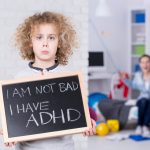Here Comes the Sun: Nimbostratus Clouds & the Naturopathic Profession
Education
David J. Schleich, PhD
In the past 2 years, matriculation has lagged in the naturopathic programs in North America. The discussions about what happened, why, and what to do have been robust and persistent. Five years ago, though, Moody’s Investors Services published an outlook document about the entire US Higher Education sector, which produced more than a few nimbostratus clouds that have lingered for months and months. (Martin, 2013) Many of us gulped.
Moody’s Cloudy Forecast
Six factors stacked up under that steady and widespread forecast, some of which have persisted. (Wilson et al, 2014) However, some eventually shifted. For example, items 5 and 6, below, changed in the ensuing few years and, hark, the sun broke through! That feels better. So far.
- diminished prospects for revenue growth
- approaching ceilings on tuition growth
- the critical challenge of student loan burden
- the specter of sustained volatile investment returns, just when modest endowment funds started going in the right direction
- a downturn in philanthropic gifts because of the economic retrenchment following 2008
- clear signals from Washington that accountability for tuition revenue and financial aid had to manifest in gainful employment, or else
Some of that gathering sun is about philanthropy. With regard to bullet 5, for example, 2017 turned out to be a pretty solid year in America for giving to America’s colleges. Philanthropy rose 6%, with the gifts mainly coming from alumni, but also from corporations and foundations. (Joslyn, 2018)
With regard to bullet 6, by late April of this year no appeals that had been reviewed had been denied within what had begun as seriously contentious legislation during the Obama years. In fact, the Trump administration’s call for less government prescription and more laissez-faire is replacing gainful employment ratios with debt-to-earnings metrics.
Let’s look a little more closely at bullet 6, half a decade later. The Gainful Employment Act may be the law of the land, but it seems to be in quasi-abeyance pending new proposed rules, including deletion of the term “gainful employment” and the Education Department’s intention to eliminate the loss of eligibility to receive federal student aid. The Association of Private Sector Colleges and Universities (with which many of us are affiliated) was critical of this legislation, whose origins go back to 2009 when the alarm bells were going off about student debt load, defaults, and the ravages of a collapsing employment market. A 2012 lawsuit by the Association of Private Sector Colleges and Universities described the impending legislation as “arbitrary and capricious.” In response, by 2014 the Department of Education tidied up its gainful employment rules.
What has survived are the original disclosure elements, mandatory reporting by colleges for certain programs, and a less daunting but equally challenging debt-to-income framework requirement. Betsy Mayotte (U.S. News and World Report, 2015) explained that these new rules pencil out only for non-degree programs and affect only students who actually graduate.
However, more than a few of our financial officers in the private post-secondary and higher-education fields (whether we are non-profit or proprietary) have the eventual rollout of this new legislation still on their radar. The debt-to-income rule is still worrying because, alongside our students, we are all concerned about income and earning(s) potential for our graduates. Millennials talk. To each other. Often. The word spreads. Brand is one thing. Entering the workforce after graduation is another.
The persisting worry is that a perfect storm of debt load, defaults, and uncertain employment opportunities is scaring undergraduates and graduates alike away from matriculating and instantly accruing loan debt. Even with the blurring of the Gainful Employment Act, many prescient, progressive post-graduate certificates are still getting set aside, pending a closer study of their respective value propositions.
Digital Indicators & International Students
There are other lingering clouds to consider as well, many of them not so ominous as they seemed a while back. Take digital education, for example. Emerging faster than back in 2014 are less nerve-wracking signals from our universe that new models of educational design and delivery have successfully moved from the on-ramp to the flow of traffic on the higher education freeway. Millennials and older, part-time adult learners like the convenience and the rigor. They like the price better. There are the rising costs of rigor and sustainability of online education to contend with as a demonstrably growing segment of programs in hundreds of colleges and universities. However, revenues are robust.
Alas, affecting the post-secondary and post-graduate terrains has been the slowing enrollment growth in international students. Even though the US share moved to 24% of the global market (as compared to 28% back in 2001), last year’s international enrollment in US colleges and universities increased 3%. (Zong & Batalova, 2018.) At the same time, over 20.4 million students (an increase, in fact, of about 5.1 million since fall. 2000) will matriculate into American colleges and universities. (National Center for Education Statistics, 2017)
The trend is slowly upwards again. Nice. At the same time, though, but not surprising to recruitment and admissions staff in our colleges, students and parents (most especially in the undergraduate tier) want more for less (translation: better services, amenities, and quality, for less tuition, or at least for a predictable half-decade of only moderate tuition increases).
Oh, and then there are worrying developments in federal tax regulations that could result in an expanded endowment tax (either in scope or percentage). Gulp. More clouds on the horizon? Well, maybe not.
Here Comes Some Sun
OK, so the post-secondary and higher-education sector still has some Eeyore clouds hanging around. However, some sun is breaking through here and there, indicative of things calming. We may be seeing in the next half of 2018 more such harbingers of sun breaking up those scary nimbostratus clouds of economic malaise. That feels better. So far.
References:
Joslyn, H. (February 6, 2018.) Giving to Colleges Up 6% in 2017. The Chronicle of Philanthropy: News and Analysis. Available at: https://www.philanthropy.com/article/Donations-to-Colleges-Up-6-in/242441. Accessed June 18, 2018.
Martin, A. (January 16, 2013.) Moody’s Gives Colleges a Negative Grade. New York Times. Available at: https://www.nytimes.com/2013/01/17/business/moodys-outlook-on-higher-education-turns-negative.html. Accessed January 19, 2016.
Mayotte, B. (July 8, 2015.) What the New Gainful Employment Rule Means for College Students. U.S. News and World Report. Available at: https://tinyurl.com/y8c2tslf. Accessed January 19, 2016.
National Center for Education Statistics. (2017.) Fast Facts: Back to School Statistics. NCES Web site. https://nces.ed.gov/fastfacts/display.asp?id=372. Accessed June 12, 2018.
Wilson, J., Pagano, E., Puckett, J. (April 10, 2014.) Five Trends to Watch in Higher Education. https://www.bcgperspective. Boston Consulting Group. Available at: https://www.bcg.com/publications/2014/public-sector-five-trends-watch-higher-education.aspx. Accessed May 22, 2018.
Zong, J., & Batalova, J. (May 9, 2018.) International Students in the United States. Migration Policy Institute. Available at: https://www.migrationpolicy.org/article/international-students-united-states. Accessed June 18, 2018.
Image Copyright: <a href=’https://www.123rf.com/profile_aphichetc’>aphichetc / 123RF Stock Photo</a>
 David J. Schleich, PhD, is president and CEO of the National University of Natural Medicine (NUNM), former president of Truestar Health, and former CEO and president of CCNM, where he served from 1996 to 2003. Previous posts have included appointments as vice president academic of Niagara College, and administrative and teaching positions at St. Lawrence College, Swinburne University (Australia) and the University of Alberta. His academic credentials have been earned from the University of Western Ontario (BA), the University of Alberta (MA), Queen’s University (BEd), and the University of Toronto (PhD).
David J. Schleich, PhD, is president and CEO of the National University of Natural Medicine (NUNM), former president of Truestar Health, and former CEO and president of CCNM, where he served from 1996 to 2003. Previous posts have included appointments as vice president academic of Niagara College, and administrative and teaching positions at St. Lawrence College, Swinburne University (Australia) and the University of Alberta. His academic credentials have been earned from the University of Western Ontario (BA), the University of Alberta (MA), Queen’s University (BEd), and the University of Toronto (PhD).










